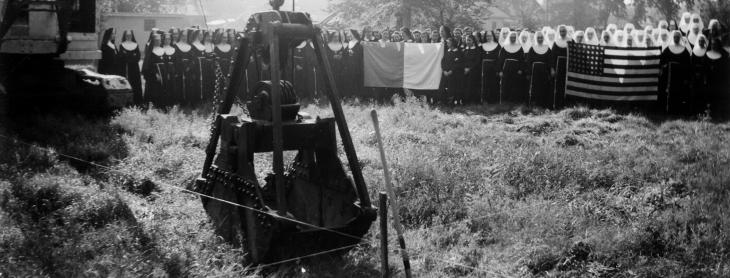Viterbo University is a Catholic, Franciscan institution of higher education located in La Crosse, Wis. For over 130 years, Viterbo has been shaped by the heritage of its founding Franciscan Sisters of Perpetual Adoration, whose legacy of meeting community needs through education continues to shape the university's mission and vision, priorities, programs, and partnerships.
Early Academic Endeavors
The university had its beginnings in the early academic endeavors of the Franciscan Sisters of Perpetual Adoration, who established St. Rose Convent in La Crosse in 1871. The FSPA subsequently founded St. Rose Normal School in 1890 to prepare sisters to teach in elementary schools. With the introduction of collegiate courses in 1923, the FSPA began to develop a four-year college curriculum. By 1931–1932, St. Rose Junior College had been formally established, with Sister Rose Kreibich as the first dean and the driving force toward the creation of a four-year educational institution. In 1937, as plans were being made for a new five-story campus building, the college's name was changed to Viterbo to reflect the birthplace of St. Rose of Viterbo, an early follower of St. Francis of Assisi.
Four-Year Institution
By 1939, Viterbo was approved as a four-year, degree-granting institution for the preparation of elementary school teachers. The inaugural Viterbo College commencement exercises were held in 1940, with the first two bachelor’s degrees awarded to Ellen Burger and Helen Kirscher, both members of the FSPA. In 1943, lay women were first admitted.
Accreditation
In the 1950s, Viterbo expanded programs in teacher education and the liberal arts. With its new status as a four-year college, Viterbo first attained accreditation by the North Central Association in 1954.
Expansion
The institution experienced a period of significant change in the 1970s: becoming coeducational, adding athletics, and growing enrollments. Viterbo awarded 1,292 degrees in the 1970s. That number rose to 1,643 in the 1980s, nearly 3,400 in the 1990s, and over 8,000 in the 2000s.
University Status
On Sept. 4, 2000, Viterbo marked another milestone — the change in name from Viterbo College to Viterbo University. This transition not only marked the institution's significant growth but formalized Viterbo's reclassification as a "comprehensive institution (university)" by the U.S. Department of Education.
Milestones
1890 — St. Rose Normal School is founded by the FSPA
1937 — Viterbo College name is first used
1941 — College academic building is completed
1943 — Lay women are first admitted
1954 — Accredited by the North Central Association
1960 — Incorporated as a not-for-profit institution
1970 — The Fine Arts Center opens its doors to the public
1971 — Viterbo becomes a coeducational institution
1972 — Academic building is renamed Murphy Center
1987 — First graduate program is launched: Master of Arts in Education
1994 — Reclassified as a comprehensive university
1999 — D.B. Reinhart Institute for Ethics in Leadership is established
2000 — Viterbo College is renamed Viterbo University
2001 — Launch of the only Master of Arts in Servant Leadership in the country
2013 — First doctoral program is introduced: Doctor of Nursing Practice
2018 — FSPA transfers sponsorship of Viterbo University to Viterbo Ministries
2018 — Center for Professional Learning is created
2022 — Sr. Thea Bowman Center is established
2024 — Casagrande Institute for Higher Education Effectiveness is established


